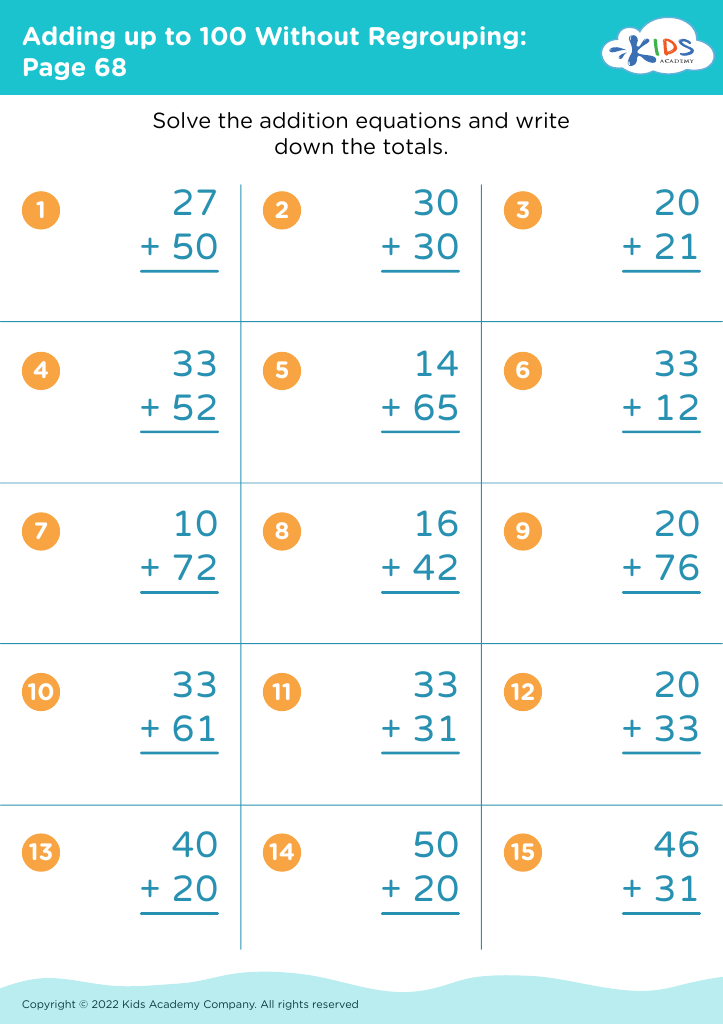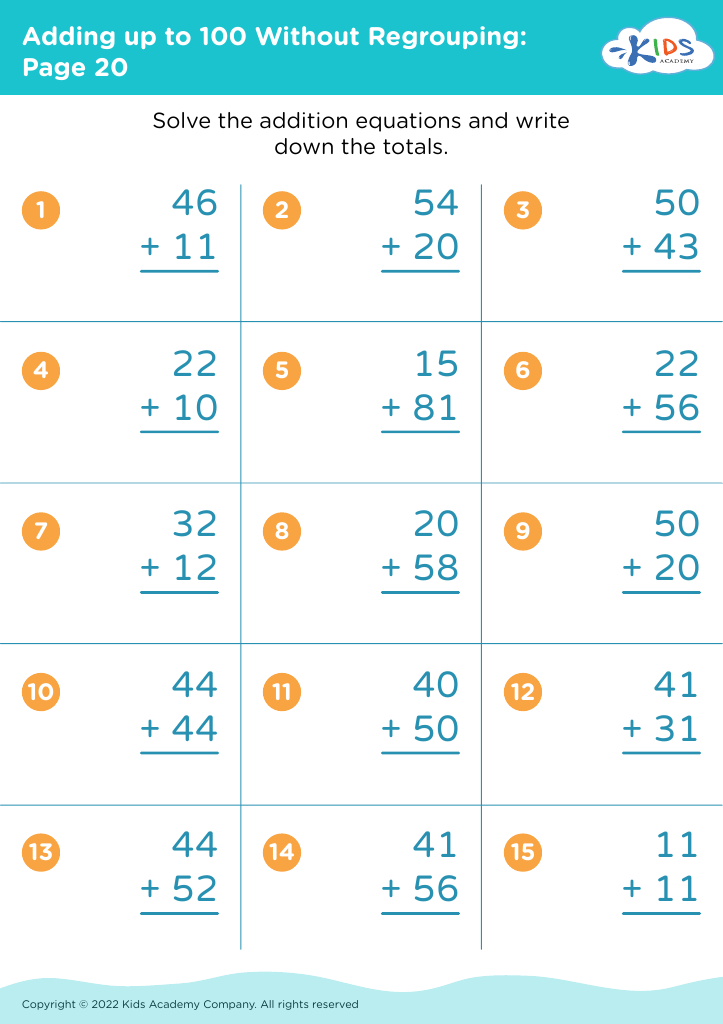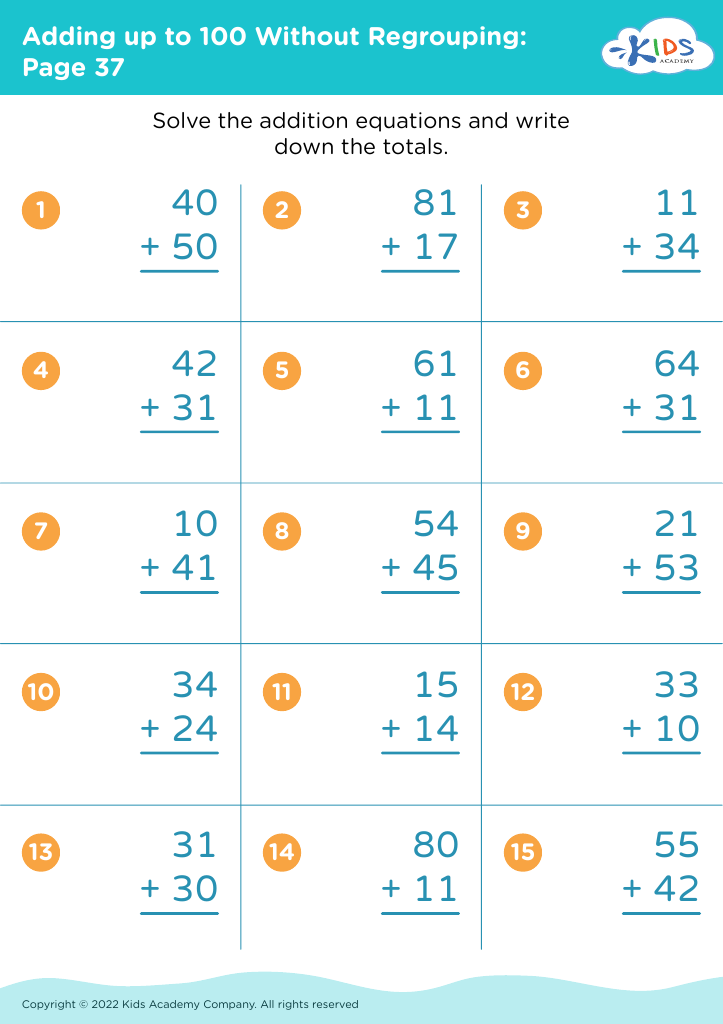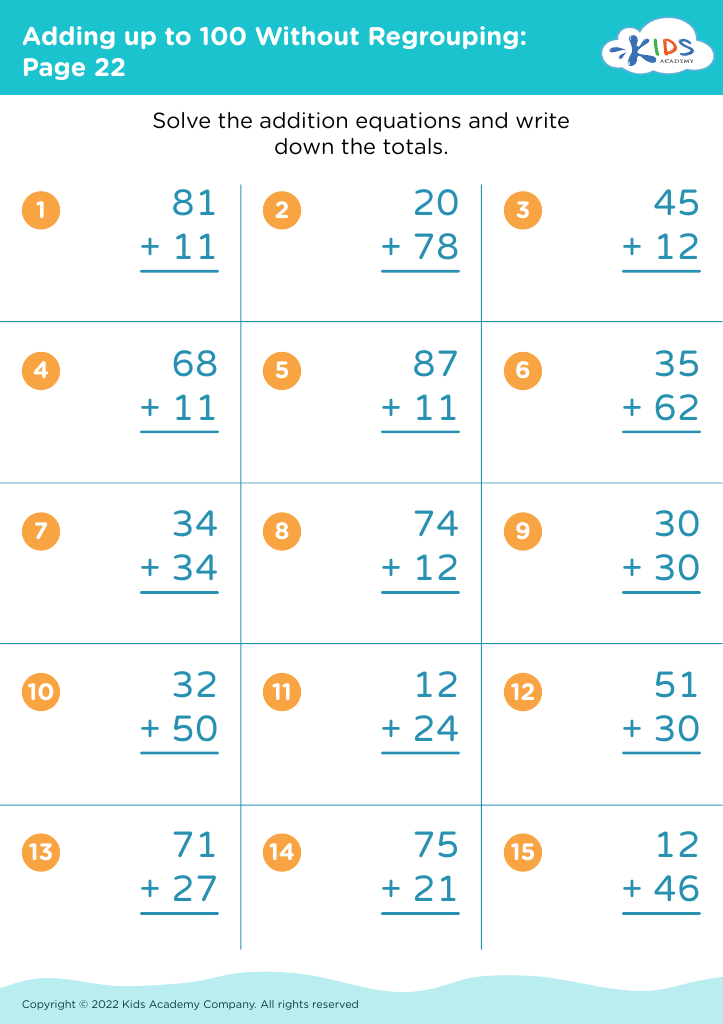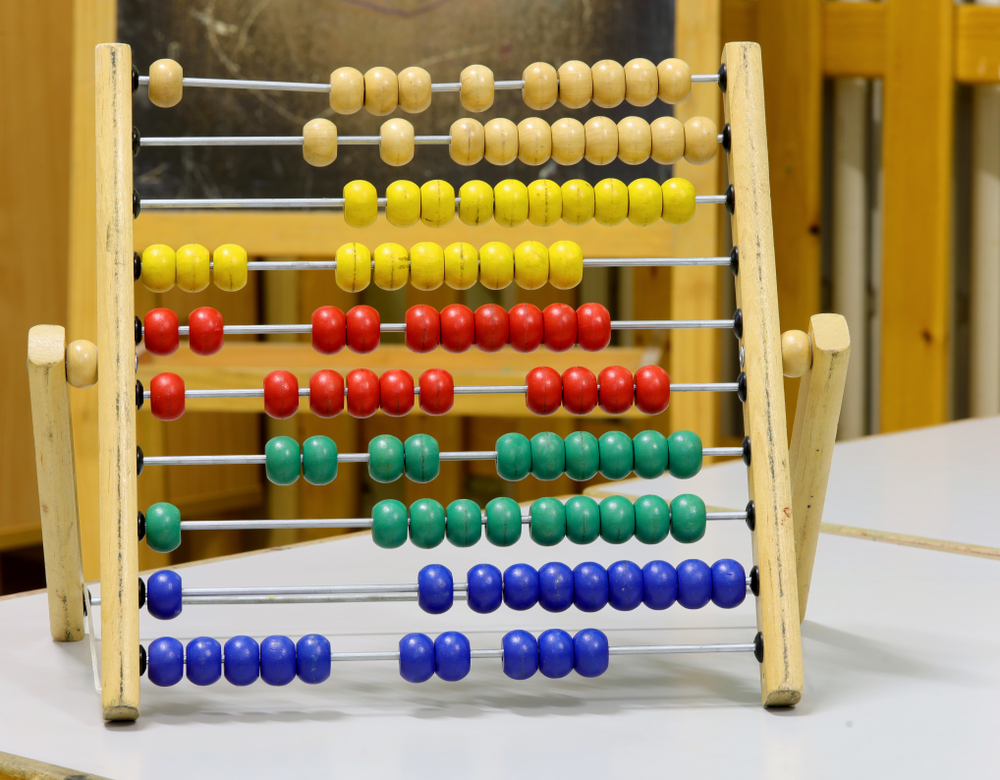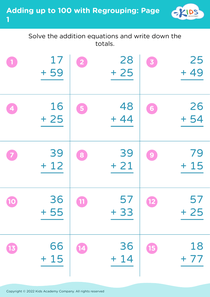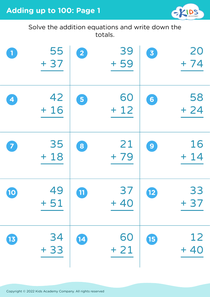Understanding multiplication Adding up to 100 Without Regrouping Worksheets for Ages 7-9
5 filtered results
-
From - To
Explore our engaging "Understanding Multiplication: Adding Up to 100 Without Regrouping" worksheets, designed specifically for children ages 7 to 9. These printable resources focus on essential multiplication skills, allowing young learners to grasp the concepts of grouping and repeated addition without the complexities of regrouping. Each worksheet includes visually appealing problems that encourage hands-on practice, reinforcing foundational math knowledge in a fun and interactive way. Perfect for classrooms or home learning, these worksheets promote confidence and competence in solving multiplication-related tasks. Foster a love for math and build strong problem-solving skills with our thoughtfully crafted activities today!
Understanding multiplication for ages 7-9, particularly adding up to 100 without regrouping, is crucial for several reasons. First, this foundational skill promotes numeracy, laying the groundwork for more complex mathematical concepts later in life. At this age, children are beginning to grasp the idea of multiplication as repeated addition, which enhances their overall mathematical fluency.
Moreover, mastering calculations that don’t require regrouping builds confidence in young learners. It helps them develop mental math skills, allowing them to solve problems more efficiently and accurately. This enhances their problem-solving abilities and fosters a positive attitude toward math, which is vital as they progress in their education.
Teachers and parents should also recognize that competency in multiplication supports performance in everyday activities, such as budgeting and shopping. A solid understanding helps children see the relevance of math in real life, increasing their engagement and motivation.
Furthermore, early mastery of these skills can lead to improved academic performance across subjects, as math is integral to understanding various disciplines. In summary, focusing on effective multiplication and addition strategies empowers children to thrive academically and in day-to-day situations. It is an investment in their future learning potential and confidence.

